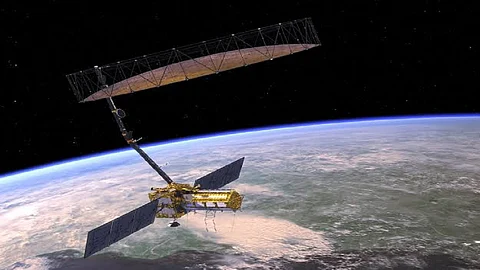

Sriharikota (Andhra Pradesh) | As ISRO is set to launch the NISAR satellite onboard a GSLV-F16 rocket later on Wednesday, here are some of the significant highlights of the satellite jointly developed with US' NASA.
Some of the highlights of the mission
•In September, 2014, NASA and ISRO sign agreement to launch a joint Earth Observing Satellite Mission.
•NISAR (NASA-ISRO Synthetic Aperture Radar) mission marks the first collaboration between the two top space agencies on a project of this scale and marks the next step in Earth-observing mission.
•It becomes first satellite mission between the two space agencies for the use of double L-band and S-band radar frequencies to measure changes on the Earth's surface less than a centimeter across.
•NASA would provide L-band Synthetic Aperture Radar, a high rate communication subsystem for science data, GPS receivers while ISRO would provide spacecraft bus, the S-band radar and the launch vehicle, GSLV-F16.
•NISAR satellite would provide a 3D-view of Earth's land and ice. It would continuously monitor earthquake and landslide prone areas and determine how quickly glaciers and ice sheets are changing.
•Data from NISAR would provide critical insights to help governments and decision makers for natural and human caused hazards.
•It would measure the woody biomass and its changes, track changes in the extent of active crops, understand the changes in wetlands extent.
• Map Greenland's & Antarctica's ice sheets, dynamics of sea ice and mountain glaciers.
• Characterise land surface deformation related to seismicity, volcanism, landslides, and subsidence and uplift associated with changes in subsurface aquifers, hydrocarbon reservoirs.
•NISAR is the most advanced radar system every launched by NASA or ISRO. It would generate more data on a daily basis than from any previous Earth satellite missions.
• GSLV-F16 becomes the first launch vehicle for ISRO to launch an earth observation satellite in a Sun-synchronous Polar Orbit (SSPO).
•The GSLV-F16/NISAR is the 102nd mission from Sriharikota.
•The first 90 days after the launch would be dedicated to commissioning of the satellite in order to prepare the observatory for science operations.
